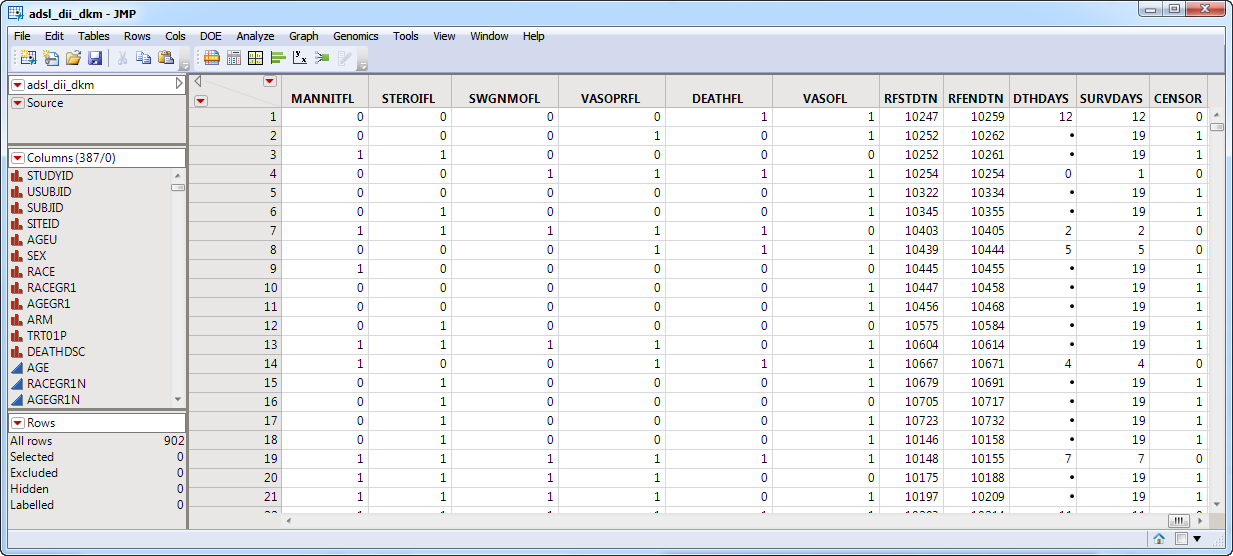Life Regression fits various survival distributions to time-to-event data and an optional censoring indicator. The input data set is assumed to be in a wide format. You may apply Predictor Reduction for reducing the initial number of candidate predictor variables before modeling. There are no built-in variable selection methods like stepwise so the number of predictors should be kept small relative to the number of rows.
Please refer to the SAS PROC LIFEREG documentation for details.
One wide Input Data Set is needed to run this process. This data set contains all of the numeric and other data, including mortality statistics, to be analyzed. Data must be in the wide format. Genetic marker data is likely in this form already, but any data that are in tall form must be converted to the wide format. The Transpose Rectangular process can be used to convert the tall data set and its accompanying Experimental Design Data Set (EDDS) to wide form.
The adsl_dii.sas7bdat data set consists of 902 rows of individuals with 382 columns corresponding to data on these individuals. It was generated from the original nicardipine ADSL data set described in Nicardipine and is included with JMP Clinical. The Mortality Time to Event process was run on this modified data set to add five columns (the last five columns shown below) listing mortality statistics and thus generate the adsl_dii_dkm.sas7bdat data set, used in the following example.
For detailed information about the files and data sets used or created by JMP Life Sciences software, see Files and Data Sets.
The output generated by this process is summarized in a Tabbed report. Refer to the Life Regression output documentation for detailed descriptions and guides to interpreting your results.
